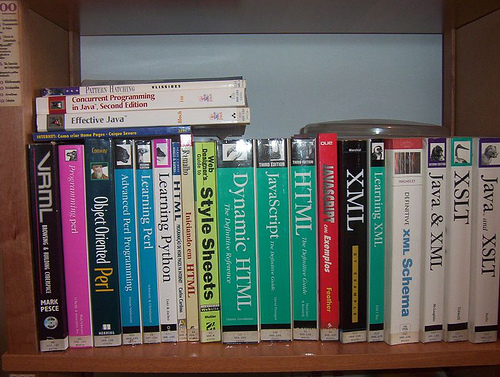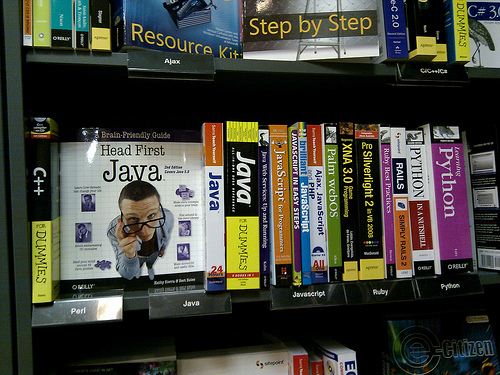Top Ten Most Popular Programming Languages 2014
Software developers know and understand how critical it is to stay up on the latest trends in programming languages. In order to stay competitive in an increasingly competitive field, it is important to develop skills in what’s relevant. Big things are happening in the world of software development. This year marks the notable return of JavaScript to the list of the top ten most popular programming languages. With an ever increasing focus on tablets and the mobile experience, JavaScript among several of the other languages on this list have gained credence. Whether your are wanting to learn your first programming language or are trying to figure out what language to study next, this list will be quite informative. The top ten most popular programming languages of 2014 are:
10
Transact-SQL
Transact-SQL is a programming language that not too many people have heard of, but is one that everyone should be aware of. Simply stated, Transact-SQL is a joint venture between Microsoft and Sybase to extend plain SQL into a fully functional procedural programming language that passes the test of being Turning complete. In order to do so, local variables, functions for string processing, date processing, and a number of mathematical utilities have been added on top of regular SQL. Microsoft has made Transact-SQL a central component of Microsoft SQL Server. All applications which interface with the Microsoft SQL Server do so by sending Transact-SQL statements to the server.
9
JavaScript
Having first appeared in 1995, JavaScript has gone through quite an evolution over the years. Built in to nearly every major web browser, JavaScript enables client-side scripts to interact with the user, control many facets of the web browser itself, communicate asynchronously with the server to deliver dynamic content, and alter the way content is displayed. More recently, JavaScript has also become common in server-side programming especially in game development and in the creation of stand-alone desktop applications. Thanks to the advent of a number of popular JavaScript libraries made freely available to the masses, JavaScript has grown from a language originally used for basic alerts and validation, to a fully fledged programming language. In fact, JavaScript is currently the fasting growing programming language at the moment. Those who had mature JavaScript skills will have no problem finding a job anywhere they want.
8
Python
First appearing in 1991, Python is the polar opposite of Perl in terms of readability. Python also supports a number of programming paradigms including object-oriented, imperative, and functional styles. The core of the language is typically described through a number of aphorisms including: Beautiful is better than ugly, explicit is better than implicit, simple is better than complex, complex is better than complicated, and readability counts. Due to these ideals, Python is often selected as the language of choice for many introduction to programming classes around the world.
7
Visual Basic
Visual Basic was designed to allow the rapid application development of graphical user interface programs utilizing data access objects, remote data objects, and Active X objects and controls. Essentially the IDE provides a number of components that the Visual Basic program itself includes. The designer clicks and grabs the components and arranges them on screen to form the GUI. Behind the scenes various actions can be assigned to different GUI components to glue everything together. It is a great language to learn for beginners, as even a moderately complex program can be written in a matter of hours.
6
PHP
PHP first appeared on the scene in 1995 and since then has become one of the workhorses of the internet. By most regards it is considered to be a server-side language, meaning it runs on a web server rather than a client (the person’s machine browsing the internet, like you are right now). PHP commands can be embedded directly into HTML documents rather than having to call an external file to process the data. Around the world nearly 20 million web servers have PHP installed on them.
[adsense]
5
C#
C# was released in 2000 and has quickly become one of the most popular programming languages in the world. It is often compared to Java and is considered one of the best viable alternatives to Java. It is currently a very popular language for designing large distributed services. It is also equally as suited for writing applications meant to run in embedded devices. Its performance is reasonably good, but not quite on the same level as C is.
4
C++
C++ was developed by Bjarne Stroustrup in 1979 at Bell Labs. It was intended to be a superset of the C programming language, adding certain features that C lacked included object-oriented support and easier memory management. It is typically the language of choice for high performance applications including entertainment software, video games, device drivers, embedded software, and scientific computing.
3
Objective-C
The rise of the iPhone and Objective-C go hand and hand. It is the primary language of the Apple iOS Operating System which runs on iPhones, iPads, and some iPods. Although just recently rising in popularity due to these devices and Apple’s backing, most people don’t realize the language has been around since 1983. Objective-C as the essence is just a thin layer that runs on top of C and is a strict superset of the C language. The syntax is different, as it follows Smalltalk-style messaging.
2
Java
Java changed the world of programming when it was released in 1995 by Sun Microsystems, who was later bought out by Oracle. James Gosling, the designer of Java, wanted a programming language where he could write his program once and run it anywhere on any hardware platform. He accomplished this by having Java run on what is called a virtual machine. Java applications, when compiled, are first converted into a universal byte code that is understood by the virtual machine. The virtual machine then translates the byte code into the format the platform it is running on understands. This means if you write a Java program on Windows, you can run it on Unix, OS-X, Solaris, or any other operating system that supports the Java Virtual Machine (JVM). It has also proven over time to be one of the quickest languages to write a complex program in. It has a ton of support for enterprise applications and is without a doubt one of the most powerful languages around.
1
C
C is the most widely used programming language of all time. In some aspect or another, almost all programming languages borrow from C in one aspect or another, including C#, C++, Java, D, Go, JavaScript, Limbo, Perl, LPC, PHP, Python, and Unix’s C shell. C is the programming language in which the Unix operating system was mostly written in. Its versatility is endless and has been used in just about every category of software imaginable. It provides a great compromise of abstraction and low level control. In performance critical applications, memory addresses can be explicitly referenced giving the programmer a granularity missing in most of the other programming languages on this list. C changed the world of computers and will forever be known as the language that brought the world into the 21st century.
If you liked this article, check out the previous year’s top programming languages:
Top Ten Most Popular Programming Languages 2013
Source of Facts: Tiobe
Featured Image: Flickr by Hector da Rocha



